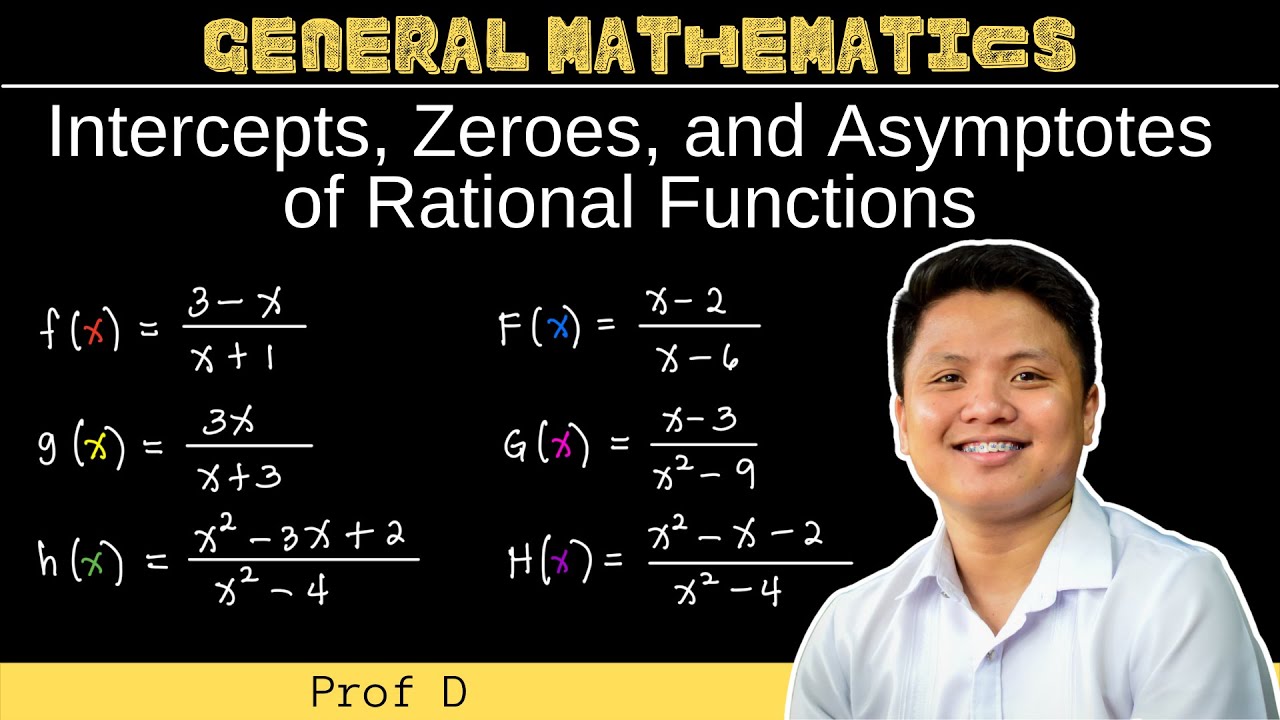Lec 37 - Zeroes of Polynomial Functions
Summary
TLDRThis video script delves into identifying zeros of polynomial functions, emphasizing the factoring technique as a crucial method for finding x-intercepts. It explains how to set polynomial equations to zero, extract common factors, and use quadratic equation-solving skills to simplify the process. The script also highlights the use of technology, such as Desmos, for graphing and verifying results, providing step-by-step examples for quadratic, cubic, and higher-degree polynomials, and discusses strategies for x and y-intercepts.
Takeaways
- 🔢 The zeros of a polynomial function are the values of x for which the polynomial equals zero.
- 📉 Identifying zeros of quadratic functions can involve graphing the function and finding the x-intercepts.
- ➗ Factoring the polynomial is a key method to find the zeros of polynomial functions.
- 🔍 Factoring can involve looking for the greatest common factor or using techniques like grouping and trinomial factoring.
- 📊 Graphical tools such as Desmos can help visualize and verify the zeros of polynomial functions.
- 📐 For higher-degree polynomials, finding zeros can be challenging and may require trial and error or advanced techniques.
- 📝 Setting the polynomial function equal to zero and factoring can reveal the zeros of the function.
- 🧮 Example: For the polynomial x^6 - 8x^4 + 16x^2, factoring out the greatest common factor x^2 and further factoring the quadratic term reveals the zeros at x = 0, 2, and -2.
- 📈 Verification using technology can confirm the identified zeros, as shown in the provided examples.
- 🌐 Understanding and applying these techniques are crucial for solving polynomial functions and finding their zeros effectively.
Q & A
What is a zero of a polynomial function?
-A zero of a polynomial function is a value of x for which the function f(x) is equal to 0.
How can the zeros of quadratic functions be identified?
-Zeros of quadratic functions can be identified by graphing the function, using the axis of symmetry, factoring the quadratic into intercept form, or setting the quadratic function to zero and solving for x.
What is an important technique for finding the zeros of polynomial functions?
-Factoring the polynomial function is an important technique for finding the zeros.
What should you do if you cannot factor a polynomial easily?
-If you cannot factor a polynomial easily, you can try using random values to find zeros and then use synthetic division to divide the polynomial by the corresponding factor.
What is the general approach for finding zeros of higher-degree polynomials?
-For higher-degree polynomials, you can try trial and error methods, use knowledge of lower-degree polynomials, and graphing tools to identify zeros.
What is the first step in finding the x-intercepts of a polynomial function by factoring?
-The first step is to set the polynomial function f(x) equal to 0.
How can you verify the zeros of a polynomial function?
-You can verify the zeros of a polynomial function using graphical tools such as Desmos.
What is an example of factoring a polynomial to find its zeros?
-For the polynomial x^6 - 8x^4 + 16x^2, you can factor out the greatest common factor x^2, then factor the remaining polynomial as a quadratic, and solve for x.
How can you identify x-intercepts for a polynomial in factored form?
-For a polynomial in factored form, you can set each factor to zero and solve for x to find the x-intercepts.
What is the y-intercept of a polynomial function, and how is it found?
-The y-intercept of a polynomial function is the value of the function when x is 0. It is found by substituting x = 0 into the polynomial and solving for the function value.
Outlines

This section is available to paid users only. Please upgrade to access this part.
Upgrade NowMindmap

This section is available to paid users only. Please upgrade to access this part.
Upgrade NowKeywords

This section is available to paid users only. Please upgrade to access this part.
Upgrade NowHighlights

This section is available to paid users only. Please upgrade to access this part.
Upgrade NowTranscripts

This section is available to paid users only. Please upgrade to access this part.
Upgrade NowBrowse More Related Video

How To Graph Polynomial Functions Using End Behavior, Multiplicity & Zeros

X- AND Y- INTERCEPTS OF GRAPHS OF POLYNOMIAL FUNCTION|| GRADE 10 MATHEMATICS Q2

INTERCEPTS OF RATIONAL FUNCTIONS || GRADE 11 GENERAL MATHEMATICS Q1

Lec 38 - Graphs of Polynomials: Multiplicities

Grade 10 - Illustrating and graphing polynomial functions | SirABC

Intercepts, Zeroes, and Asymptotes (Horizontal/Vertical) of Rational Functions | General Mathematics
5.0 / 5 (0 votes)